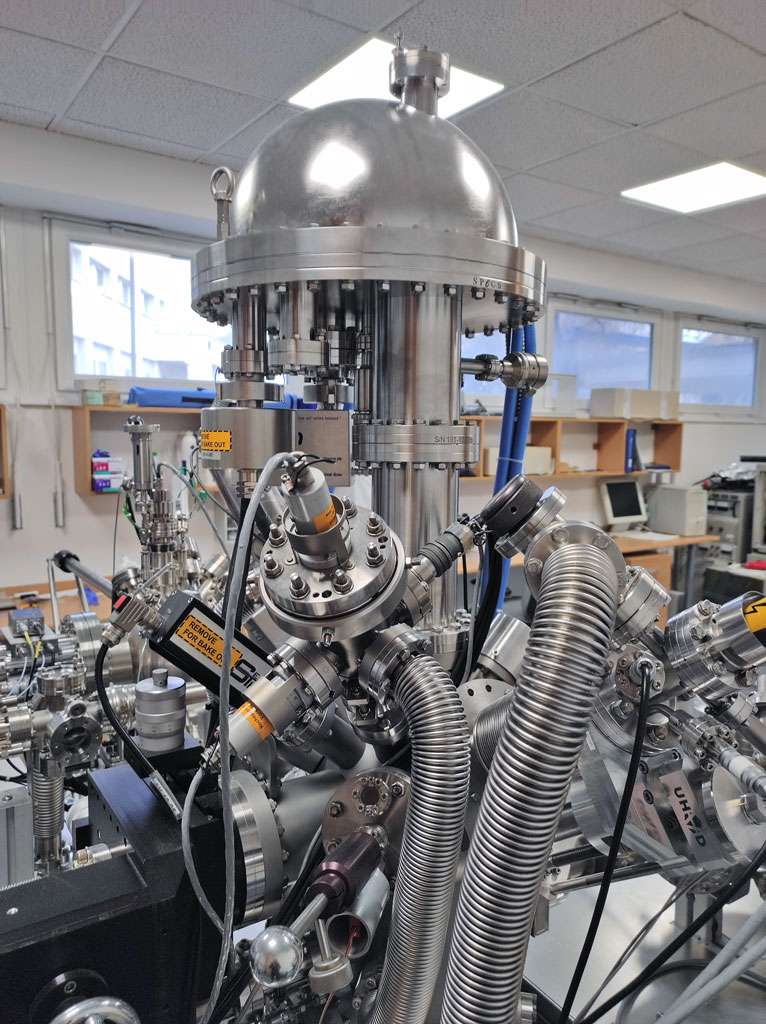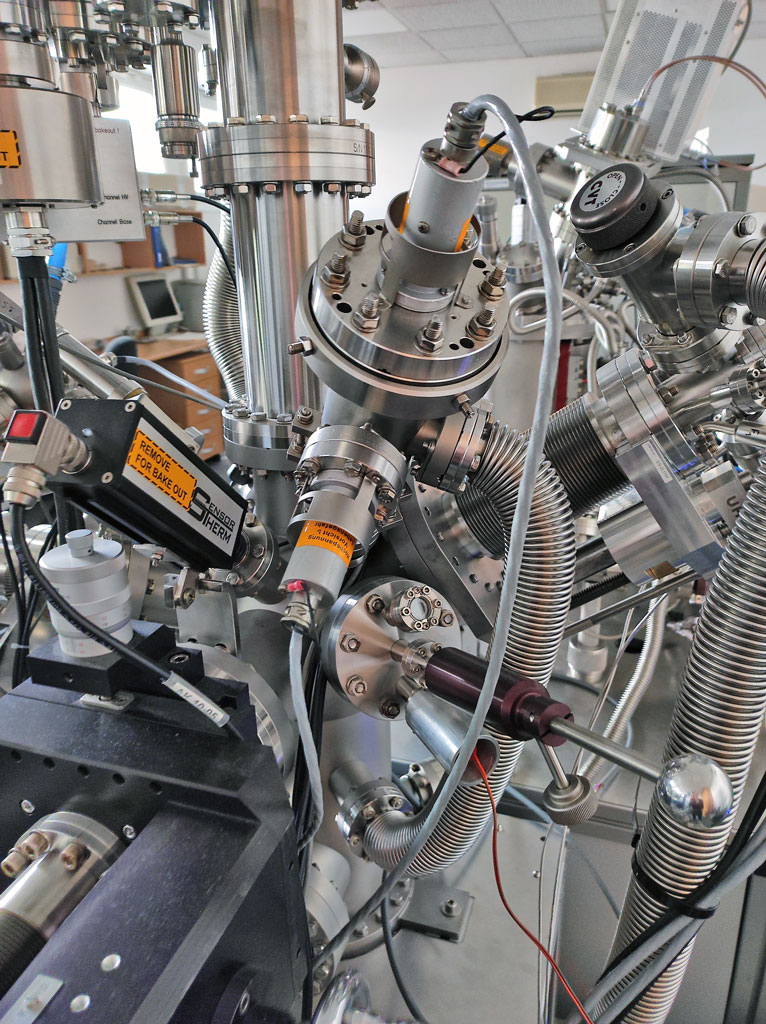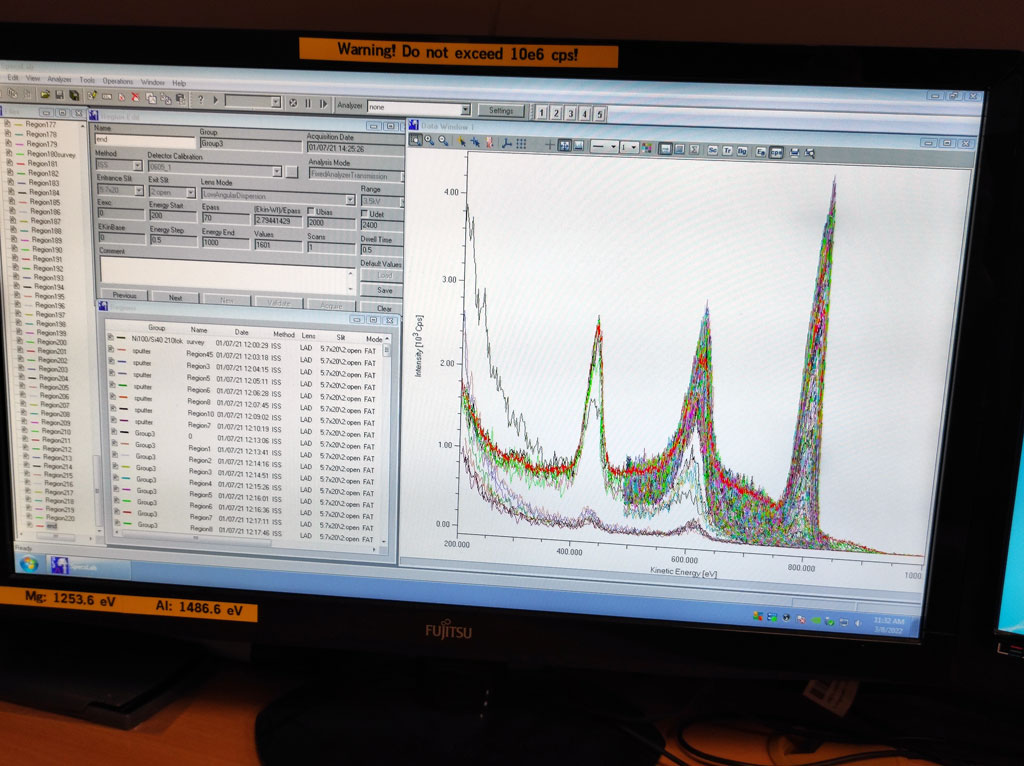Low Energy Ion Spectroscopy (LEIS)
INFRASTRUKTÚRA
Low-energy ion scattering spectroscopy (LEIS) is a surface-sensitive analytical technique used to characterize the chemical and structural makeup of materials.
LEIS involves directing a stream of charged particles known as ions at a surface and making observations of the positions, velocities, and energies of the ions that have interacted with the surface. Data that is thus collected can be used to deduce information about the material such as the relative positions of atoms in a surface lattice and the elemental identity of those atoms. LEIS is unique in its sensitivity to both structure and composition of surfaces. Additionally, LEIS is one of a very few surface-sensitive techniques capable of directly observing hydrogen atoms, an aspect that may make it an increasingly more important technique as the hydrogen economy is being explored.


During LEIS measurements, helium ions (He +) scattered on the sample surface were detected with a hemispherical energy analyzer (Phoibos, SPECS, Berlin). The basic vacuum in the instrument is 5×10-10 mbar. The partial operating pressure during LEIS measurements is 10-7 mbar due to the He+ ion beam. The ion energy and intensity of the He+ beam are typically 1 keV and 45 nA. Such low bombardment energy and intensity prevents unnecessary atomization of the surface of the samples during the measurements.

